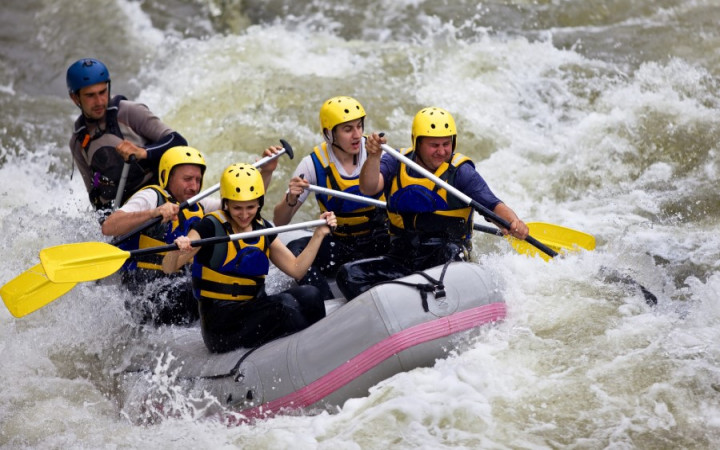Today’s Wonder of the Day was inspired by Lani. Lani Wonders, “What is a river current?” Thanks for WONDERing with us, Lani!
Do you love the great outdoors? How about trying new things? If so, then you may be interested in a fast-paced water adventure. What are we talking about? Whitewater rafting, of course!
On a whitewater rafting trip, you’ll paddle your way down a beautiful river. You can also look forward to racing through fast rapids. It’s possible to take your own raft down some whitewater rivers. But there are also many companies that offer guided trips. They take boats down some of the most famous rivers around the world.
Do you have to be a boating expert to enjoy whitewater rafting? Of course not! Guided trips can be fun for people of just about any skill level. Of course, it’s still a good idea to avoid the activity if you can’t swim. Safety is the most important part of any rafting trip.
What exactly is “whitewater”? The word refers to areas of fast-moving water called rapids. They often flow over drops and around large objects, such as boulders. Some whitewater rivers can be used year-round if there’s enough rainfall. However, most are seasonal.
For example, the Chattooga River flows between Georgia and South Carolina. It’s a free-flowing river that can usually be used for rafting between early spring and late fall. The nearby Ocoee River in southern Tennessee, however, is a dam-controlled river. Its season is controlled by river authorities.
On a guided trip, you’ll usually join a few other people on a rubber raft. Whitewater rafts are sturdy to stand up to the objects they often bounce off of. They’re also flexible enough to move through difficult rapids.
Rapids are classified with ratings from one to six. Class one rapids move slowly with few waves. They’re a good fit for most rafting trips. Class six rapids are another story. They have dangerous drops, huge obstacles, and rough waters. Even professional rafters can have difficulty on them. Most whitewater rafters enjoy guided tours with a mixture of easy to moderate rapids. Tours also often have few challenging rapids thrown in to get your pulse racing.
On a whitewater rafting trip, you’ll help paddle to move your boat downstream. Fortunately, whitewater rafting guides, often nicknamed “river rats,” will be along to show you how. They’ll also teach you more about the rapids you’ll face. This way, you can learn how to handle them safely.
In addition to an oar, you’ll also need a life jacket. This will help you float should you fall out of the raft. Many people also use special clothing, including wetsuits, when whitewater rafting during colder seasons.
Many beginners choose to take a half-day trip to get their feet wet—both literally and figuratively! Once you’ve been bitten by the whitewater bug, you may choose to return. Many people take full-day trips or even multi-day trips with stops for camping along the river overnight.
Have you ever been whitewater rafting? Would you like to go? Will you take a half-day trip or make a whole weekend of it? If you’re up for an adventure, check out a whitewater river near you!
Standards: CCRA.L.3, CCRA.L.6, CCRA.R.1, CCRA.R.2, CCRA.R.4, CCRA.R.10, CCRA.SL.1, CCRA.W.4




